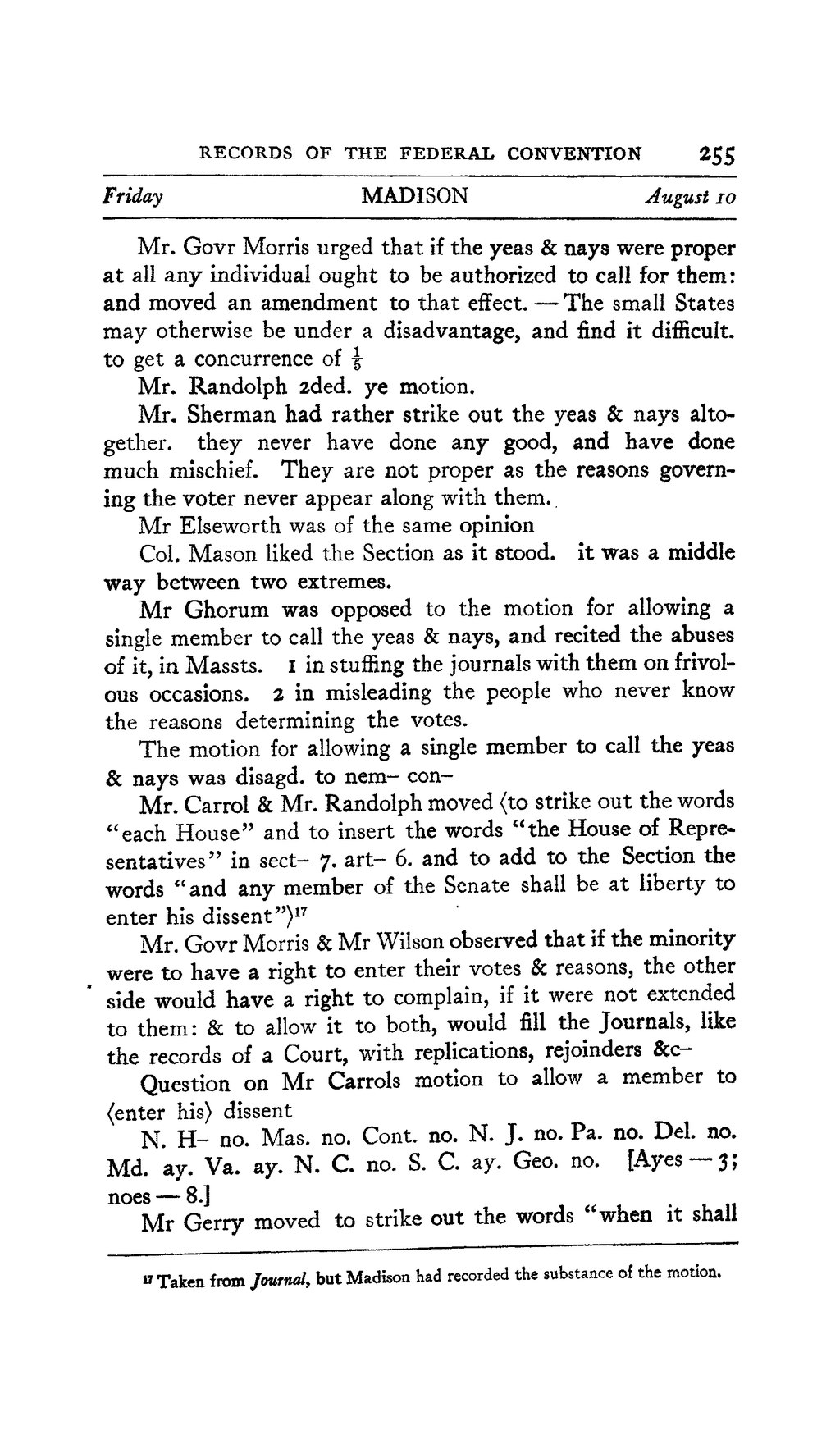RECORDS OF THE FEDEKAI, CONVENTION 355 Friday MADISON .,lugusi Mr. Govr Morris urged that if the yeas & nays were proper at all any individual ought to be authorized to call for them: and moved an amendment to that effect.- The small States may otherwise be under a disadvantage, and find it difficult. to get a concurrence of ? Mr. Randolph 2ded. ye motion. Mr. Sherman had rather strike out the yeas & nays alto- gether. they never have done any good, and have done much mischief. They are not proper as the reasons govern- ing the voter never appear along with them.. Mr Elseworth was of the same opinion Col. Mason liked the Section as it stood. it was a middle way between two extremes. Mr Ghorum was opposed to the motion for allowing a single member to call the yeas & nays, and recited the abuses of it, in Massts. x in stuffing the journals with them on frivol- ous occasions. 2 in misleading the people who never know the reasons determining the votes. The motion for allowing a single member to call the yeas & nays was dlsagd. to hem- con- Mr. Carrol & Mr. Randolph moved (to strike out the words "each House" and to insert the words "the House of Repre- sentatives" in sect- 7. art- 6. and to add to the Section the words "and any member of the Senate shall be at liberty to enter his dissent") '7 Mr. Govr Morris & Mr Wilson observed that if the minority were to have a right to enter their votes & reasons, the other side would have a right to complain, if it were not extended to them: & to allow it to both, would fill the Journals, like the records of a Court, with replications, rejoinders &c- Question on Mr Carrols motion to allow a member to (enter his) dissent N. H- no. Mss. no. Cont. no. N.J. no. Pa. no. Del. no. Md. ay. Va. ay. N. C. no. S.C. ay. Geo. no. [Ayes--3; noes -- 8.] Mr Gerry moved to strike out the words "when it shall Taken from Jolts. l, but Madison had recorded the substance of the motion.
�
